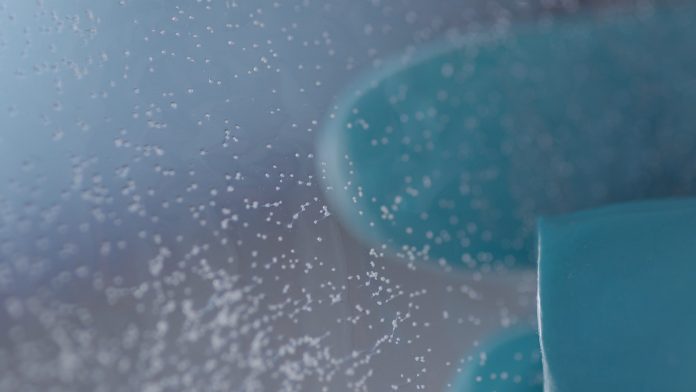VTT Senior Scientist Suvi Arola and Research Professor Tekla Tammelin discuss their research into how nanocellulose can be used to capture microplastics and nanoplastics from water.
Cellulose, the main component of plants, is hygroscopic, meaning that cellulose binds and retains water efficiently. This is one of the main reasons why cellulose is now being explored as a bio-based material, which could come to replace traditional materials in a range of applications. What is more, in nanocellulose the hygroscopic properties are enhanced, while others can also be introduced. This makes nanocellulose useful in applications which capture and remove microplastics and nanoplastics from water.
This research emerges from VTT Technical Research Centre of Finland. Innovation News Network spoke with VTT’s Senior Scientist Suvi Arola and her colleague Research Professor Tekla Tammelin about this research and how it can be developed to real-world applications.
What is nanocellulose? Why is it perfect for the detection and capture of microplastic particles in water?
We have been conducting research on nanocellulose for over a decade; and we are therefore very familiar with its properties. A key element is that it is derived from nature, making it both renewable and biodegradable. This is one of the main reasons why we decided to focus on nanocellulose research.
As a material, nanocellulose is very versatile. We also know how to process it to achieve different shapes and structures. We are able to create flexible, dense films as well as porous 3D structures; it can also be used as a nanocoating. We are also able to affect the material’s properties by modifying its surface chemistry.
Since nanocellulose has a large surface area, the ‘normal’ properties of cellulose are enhanced, including the way it interacts with water. Nanocellulose is very efficient at binding water on its surface. Binding at the surface in turn causes absorption of water into the nanocellulose network structure. The absorption in nanocellulose is significant as the surface area is very big. As nanocellulose network is porous the absorption of water creates a flow inside the material’s cavities. This flow, capillary flow, is weak but still strong enough to transport the colloidal size micro- and nanoplastics into the nanocellulose network. When the particles are near the nanocellulose surface they interact with the reactive surface area and adhere.
Conventional filtration and density flotation methods can be used to capture larger micron-sized particles. With nanoparticles you really need to work on the colloidal interactions, and so a colloidal material like nanocellulose works really well. The nanoplastic particles are so small and light that the water flow created by the hygroscopicity of the nanocellulose can be used to convey them to the vicinity or even inside the nanocellulose network where they can be efficiently entrapped.
What did your nanocellulose research involve? What challenges did you encounter?
When we started our first large-scale project at VTT on nanocellulose research in 2008 we wanted to learn how the material behaves and how we could modify its properties. The main research lines came from the paper industry; and we learned how to utilise nanocellulose in paper-related applications. The findings were adaptable to other applications as well, one of which was the use of membranes in water purification technologies. Today’s research line related to nanocellulose membranes has attracted a lot of attention: within the water purification arena the possibility of capturing plastic particles, especially nanoplastics, is extremely timely.
There is also significant potential for nanocellulose to replace fossil-based materials in a number of applications. Although much has been done to develop fossil-based materials with hydrophilic properties to enhance their performance in water purification applications, chemistry is still needed for the modification of the polymers. However, hygroscopicity is an intrinsic feature of nanocellulose. Nanocellulose is also porous in structure, and that porosity can be tailored.
What is more, also the large amount of surface area of the nanocellulose can be modified. We can improve, for example, the capturing specificity of the materials. By modifying the surface of the nanomaterial we can tailor it to a specific task, for example to capture microplastic or nanoplastic particles efficiently.
How does your research integrate to the targets of the FinnCERES Flagship?
The FinnCERES Flagship programme, established in 2018 by VTT and the Aalto University and funded by the Academy of Finland, is designed to harness the natural properties of lignocellulose to create new sustainable materials. We have identified several important properties and applications for lignocellulosic materials, which can bring a whole range of new characteristics and features to the current materials marketplace, while at the same time reducing reliance on fossil-based materials.
What will be the most important applications for the nanocellulose structure? Are you going to partner with industry to develop filtration solutions, or is there need for further research before commercialisation?
As material scientists, we are primarily interested in exploring the properties of lignocellulose and thereby developing a better understanding of what that family of materials can offer in relation to different applications. However, it is also important for the research to be connected to the other elements of the value chain. Industry needs to be aware of the work that is taking place – for instance, those involved in the development and manufacture of membranes and filtration devices.
No one actor alone can realise the potential of nanocellulose in potential application areas. As such, we are constantly working to demonstrate both the science behind the material and the future applications. At the laboratory scale, we have already demonstrated that the material works. It is now time to begin to integrate other players, such as manufacturers and end users. Innovation is very much at the heart of the FinnCERES Flagship programme, where we focus on seeking industrial partners and create networks to promote future commercialisation.
Where will your priorities lie in the future?
While we are looking for industrial partners to help in the development of applications, we are also keen on building a network of researchers interested in the area of water purification and filter technologies. When research results reach the stage where they become innovations to be commercialised, it does not mean that the research has to stop.
The next round of Horizon Europe will be launched shortly by EU. Are you going to apply funding from the European Framework programme?
We will certainly be applying for EU funding. We will soon be publishing a paper on the results of the project which, we hope, will aid in a successful proposal. We will also continue to be proactive in terms of both our research and our search for industrial and scientific partners as we work to ensure that the potential of our material is realised. We believe that our materials can have a significant beneficial impact in the future.
VTT Technical Research Centre of Finland Ltd
+358 20 722 111
n.n@vtt.fi
www.vttresearch.com/en









